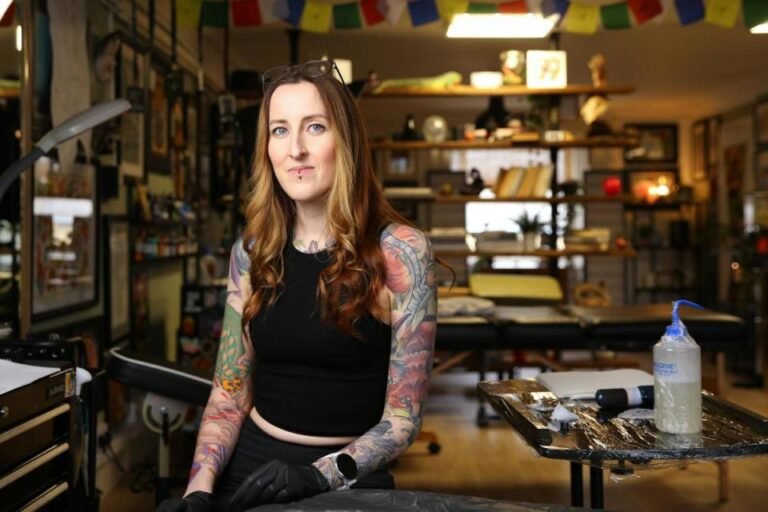Botox Vs. Fillers: Experts Explain the Difference Between the Injectables

Introduction
Botox and fillers, also known as injectables, are popular non-surgical cosmetic procedures used to treat various facial problems. Botox is a type of muscle relaxant that works by temporarily blocking the release of acetylcholine, a neurotransmitter responsible for muscle contraction. On the other hand, fillers are made up of substances like hyaluronic acid and are mainly used to restore volume and improve sagging skin.
It’s important to know the main differences between Botox and fillers in order to make informed decisions about cosmetic treatments. Each option has its own specific uses for addressing different facial concerns, so it’s crucial for individuals to understand their unique features and effects. By having a thorough understanding of these injectables, people can ensure that their treatment choices match their specific aesthetic goals and issues.
Understanding Botox
Botox is a popular cosmetic treatment that has gained immense popularity over the years. It is a type of neuromodulator that is used to minimize the appearance of wrinkles and fine lines on the face. To understand how Botox works, let’s dive into its definition and mechanism of action:
Definition
Botox, short for botulinum toxin, is a purified form of the botulinum toxin protein produced by the bacterium Clostridium botulinum. It is administered via injections and is approved by the FDA for cosmetic use.
Mechanism of Action
Botox works by blocking signals between nerves and muscles. It inhibits the release of acetylcholine, a neurotransmitter responsible for muscle contraction. By doing so, Botox temporarily relaxes the muscles in the treated area, preventing them from contracting and causing wrinkles.
Botox primarily targets dynamic lines, which are caused by repetitive facial movements such as frowning or squinting. These lines include forehead lines, crow’s feet, and vertical lines between the eyebrows. By relaxing the underlying muscles responsible for these movements, Botox can significantly reduce their appearance.
The effects of Botox injections typically last for three to four months, after which further treatments are required to maintain the desired results. However, recent research suggests that preventative Botox may have longer-lasting effects in reducing wrinkle formation.
One important thing to note about Botox is that it does not immediately erase wrinkles or fine lines. It takes some time for the effects to become noticeable, usually within a few days to a week after treatment. This gradual onset allows for a more natural-looking outcome.
It is crucial to choose an experienced and qualified professional when considering Botox treatment. A skilled injector will understand the nuances of facial anatomy and customize the treatment plan according to individual needs. This ensures optimal results while minimizing any potential risks or side effects.
In summary, Botox is a neuromodulator that relaxes muscle movement by inhibiting the release of acetylcholine. It is an effective treatment for dynamic lines and wrinkles caused by repetitive facial movements. Choosing a reputable professional is essential to achieve safe and satisfactory outcomes with Botox injections. Additionally, emerging evidence suggests that preventative Botox may play a role in reducing the formation of future wrinkles, offering a proactive approach to skincare.
Exploring Fillers
Fillers, also known as dermal fillers, are cosmetic gels that are injected into the skin to restore volume and improve the appearance of sagging or aging skin. They are commonly composed of hyaluronic acid, a substance naturally found in the body that helps maintain skin hydration and volume.
Definition and Composition of Fillers
Dermal fillers are comprised of hyaluronic acid, a naturally occurring substance in the body that contributes to skin hydration and plumpness. The hyaluronic acid used in fillers is synthetically produced and formulated into a smooth gel for injection.
Restoring Volume and Addressing Sagging Skin Concerns
Fillers play a crucial role in addressing volume loss in various areas of the face, such as the cheeks, nasolabial folds, and marionette lines. By adding volume to these areas, fillers help to restore youthful contours and reduce the appearance of sagging skin.
In contrast to Botox, which primarily targets dynamic lines caused by muscle movement, fillers focus on addressing volume loss and enhancing facial contours. The use of hyaluronic acid in fillers not only provides immediate plumping effects but also stimulates collagen production over time, contributing to long-term improvement in skin quality.
Key Differences Between Botox and Fillers
When it comes to choosing the right cosmetic treatment for your needs, it’s important to understand the key differences between Botox and fillers. While both treatments involve injections, they target different areas of concern and work in distinct ways to achieve their desired effects.
Here are the key differences between Botox and fillers:
- Target Areas: Botox primarily focuses on dynamic lines, which are caused by repetitive muscle movements. It is commonly used to treat wrinkles on the forehead, between the eyebrows (glabellar lines), and crow’s feet around the eyes. On the other hand, fillers are best suited for addressing volume loss and folds in areas such as the cheeks, nasolabial folds (lines from the nose to the mouth), and marionette lines (lines from the corners of the mouth to the chin).
- Mechanism of Action: Botox works as a neuromodulator by temporarily relaxing muscle movement. It achieves this by inhibiting the release of acetylcholine, a neurotransmitter responsible for muscle contractions. By reducing muscle activity, Botox helps smooth out wrinkles and prevent further deepening of lines. In contrast, fillers work by restoring volume to areas that have lost fat or collagen over time. Most fillers contain hyaluronic acid, a natural substance that attracts water molecules to plump up the skin and improve its texture.
- Application Techniques and Results: The application techniques for Botox vary depending on its target areas. Typically, Botox is injected directly into the muscles using a tiny needle, with multiple injections administered in specific locations for precise placement. The results of Botox treatment usually become noticeable within a few days and can last for three to six months.
Filler injections, on the other hand, are strategically placed beneath the skin using a fine needle or cannula. The results of fillers are often immediate, with visible improvements in volume and a plumper appearance. The duration of filler results can vary depending on the type of filler used, but typically last between six months to two years.
Understanding these key differences between Botox and fillers is crucial for making informed decisions about your aesthetic treatments. While Botox is more suitable for dynamic lines and wrinkles caused by muscle movement, fillers excel at restoring volume and addressing sagging skin concerns. It’s always best to consult with a qualified professional to determine which treatment option is most appropriate for your specific needs.
Considering Age in Botox and Fillers Treatment
Age plays a significant role when it comes to considering the use of Botox and fillers for aesthetic treatments. Both Botox and fillers can address different concerns related to aging, but the approach may vary depending on the age of the patient.
Botox for Younger Patients
One of the unique aspects of Botox is its ability to act as a preventative treatment for younger patients. While lines and wrinkles may not be prominent at a younger age, starting Botox early can help minimize the development of future lines. By relaxing muscle movement, Botox prevents repetitive facial expressions that can lead to dynamic lines over time. It’s like pressing the pause button on the aging process.
Younger patients can benefit from Botox in areas such as:
- The forehead
- Crow’s feet
- Frown lines between the eyebrows
Fillers for Existing Volume Loss
As we age, our skin naturally loses volume, resulting in sagging and folds. Fillers are an excellent option for addressing this issue. With their ability to restore volume, fillers can plump up areas that have lost fullness due to aging. They are commonly used to treat areas such as:
- The cheeks
- Nasolabial folds (lines from the nose to mouth)
- Marionette lines (lines from corners of the mouth downwards)
- Under-eye hollows
Fillers provide immediate results by filling in hollow areas and giving a more youthful appearance.
It’s important to note that while these are general guidelines based on age, individual needs and goals should always be taken into account when considering Botox or fillers. Ultimately, it’s best to consult with a qualified professional who can assess your specific concerns and recommend the most suitable treatment plan. A skilled dermatologist or plastic surgeon will ensure you receive personalized recommendations and achieve the desired results.
By understanding how Botox and fillers can address different aspects of aging, you can make informed decisions about which treatment may be appropriate for your unique needs. Remember, Botox is ideal for preventing future lines in younger patients, while fillers are effective in treating existing volume loss. Consulting with a skilled dermatologist or plastic surgeon will ensure you receive personalized recommendations and achieve the desired results.
The Importance of Choosing a Qualified Professional
Finding a Qualified Professional for Botox and Fillers is crucial for ensuring safe and effective treatment outcomes. Here are some key points to consider:
1. Risks of Inexperienced Injectors
Inexperienced individuals performing Botox or filler injections can lead to suboptimal results and even potential harm. Without proper training and expertise, there is an increased risk of asymmetry, overcorrection, or other adverse effects.
2. The Importance of Medical Expertise
Botox and filler procedures involve intricate knowledge of facial anatomy, injection techniques, and product selection. Trained professionals such as dermatologists and plastic surgeons have a deep understanding of facial aesthetics and can tailor treatments to individual needs while prioritizing safety.
Tips for Finding a Reputable and Skilled Practitioner
When seeking a qualified professional for your Botox or filler injections, consider the following recommendations:
- Credentials: Look for practitioners who are board-certified in dermatology or plastic surgery. Certification indicates that the individual has completed rigorous training and meets high standards of competence in their field.
- Experience: Inquire about the practitioner’s experience specifically with Botox and fillers. An experienced professional is likely to have performed numerous successful injections, honing their skills over time.
- Before-and-After Portfolio: Request to see before-and-after photos of previous patients treated by the practitioner. This visual evidence can provide insight into their aesthetic sensibilities and the quality of their work.
- Patient Reviews: Research online reviews and testimonials from other individuals who have received treatments from the practitioner. Positive feedback regarding professionalism, results, and overall satisfaction is a good indicator.
- Consultation: Schedule an initial consultation with the practitioner to discuss your goals, assess your suitability for treatment, and address any concerns you may have. Use this opportunity to evaluate the practitioner’s communication style and attentiveness to your specific needs.
By prioritizing the expertise and qualifications of your chosen professional, you can enhance the likelihood of achieving desirable outcomes while minimizing potential risks associated with Botox and filler treatments. It is also important to familiarize yourself with the scope of practice regulations in your region to ensure that the practitioner is authorized to perform these procedures safely.
Conclusion
Understanding the difference between Botox and fillers is crucial for making informed decisions about your aesthetic treatments. Consulting with a qualified professional is key to determining which option is most suitable for your specific concerns. Whether you’re considering Botox or fillers, seeking the expertise of a skilled dermatologist or plastic surgeon will ensure safe and effective treatment.
- Botox is ideal for addressing dynamic lines
- Fillers excel in addressing volume loss and folds
Both options contribute to achieving smoother, plumper-looking skin, but their mechanisms and target areas differ significantly.
Your journey towards choosing between Botox and fillers should be guided by thorough research and expert consultation. Embrace the opportunity to enhance your natural beauty with confidence and assurance under the care of a qualified professional.










